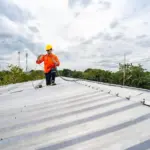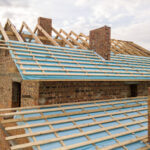Roofing is one of the most crucial investments for any homeowner. A properly installed roof not only protects your home from harsh weather conditions but also enhances curb appeal and increases property value. Whether you’re building a new home or replacing an old roof, understanding the costs, process, and expectations of residential roofing installation is essential. We’ll go over everything you need to know in this tutorial. For expert roofing services, DVITO Roofing provides top-quality craftsmanship and reliability.
Understanding the Cost of Residential Roofing Installation
The cost of residential roofing installation varies based on several factors. On average, homeowners in the U.S. can expect to pay between $5,000 and $15,000 for a new roof, but the final price depends on:
1. Roofing Material
Different materials come at different price points, impacting the overall cost of installation. Here’s a breakdown:
- Asphalt Shingles – $3 to $5 per square foot (affordable and common)
- Metal Roofing – $5 to $15 per square foot (durable and energy-efficient)
- Tile Roofing – $10 to $25 per square foot (long-lasting but expensive)
- Slate Roofing – $15 to $30 per square foot (premium and durable)
- Wood Shingles – $5 to $12 per square foot (classic look but requires maintenance)
2. Roof Size and Complexity
Costs go up for larger roofs since they need more work and materials. If your roof has multiple slopes, valleys, or chimneys, expect additional charges due to the complexity of installation.
3. Labor Costs
Labor costs depend on location, contractor expertise, and job complexity. A professional roofing crew typically charges $50 to $150 per hour.
4. Permits and Inspections
Local building codes may require permits, which can range from $100 to $500. Inspections may also be necessary, adding to the total cost.
5. Additional Repairs
If your roof has underlying damage like rotting decking, mold, or insulation issues, repair costs will increase your total expenses.
Process of Roofing Installation
Initial Roof Inspection and Estimate
Before any work begins, a roofing contractor will assess your existing roof’s condition and provide a detailed estimate. This step includes measuring your roof, checking for damage, and discussing material options.
Choosing the Right Materials
Selecting the right roofing material is crucial. Factors like climate, budget, and aesthetics play a role in the decision-making process.
Removing the Old Roof (If Needed)
If replacing an old roof, contractors will first remove existing materials. This process can take a day or two, depending on the size and condition of the roof.
Inspecting and Repairing the Roof Deck
After removing the old roof, contractors check the deck for rot or damage. Any necessary repairs are done before proceeding with the new installation.
Installing Roofing Underlayment and Flashing
A waterproof underlayment is installed to protect against leaks. Flashing is added around chimneys, vents, and valleys to prevent water penetration.
Laying the New Roofing Material
Once the underlayment is in place, the new roofing material is installed. Asphalt shingles, metal panels, or tiles are laid in overlapping layers to ensure a watertight seal.
Final Inspection and Cleanup
After installation, contractors perform a final inspection to ensure proper installation. The site is cleaned up, and debris is removed, leaving you with a brand-new roof.
What to Expect During the Roofing Installation Process
- Noise and Disruptions: Roofing work is loud, so expect noise throughout the project.
- Weather Delays: Rain, snow, or extreme temperatures may cause delays.
- Time Frame: Most residential roofing installations take 1 to 3 days, but larger or more complex projects may take longer.
- Increased Home Value: A new roof improves energy efficiency and increases property value.
Tips for a Successful Roofing Installation
- Hire a Reputable Contractor – Always check reviews, certifications, and previous work before hiring a roofing company.
- Plan for Unexpected Costs – Set aside an extra 10-20% of your budget for unforeseen expenses.
- Choose High-Quality Materials – Investing in durable materials ensures long-term protection.
- Schedule the Installation Wisely – Spring and fall are ideal seasons for roofing projects.
- Check Warranty Options – Many roofing materials come with warranties; choose a product with at least 20-30 years of coverage.
Conclusion
A residential roofing installation is a significant investment that requires careful planning and execution. Understanding the costs, process, and expectations can help homeowners make informed decisions. Whether you’re replacing an aging roof or installing one on a new home, working with a trusted contractor ensures a smooth experience. For expert roofing services, consider reaching out to DVITO Roofing for top-quality craftsmanship and reliability.
FAQs
1. How long does a residential roofing installation take?
Most installations take 1 to 3 days, but complex projects may take longer.
2. What is the best roofing material for durability?
Metal and slate roofs are among the most durable, lasting 50-100 years.
3. Can I install a new roof over my old one?
In some cases, yes, but it depends on local codes and the condition of your existing roof.
4. Will a new roof increase my home’s value?
Yes, a new roof enhances curb appeal and can boost resale value by 60-70%.
5. How do I maintain my new roof?
Regular inspections, cleaning gutters, and addressing small repairs promptly can extend the lifespan of your roof.


